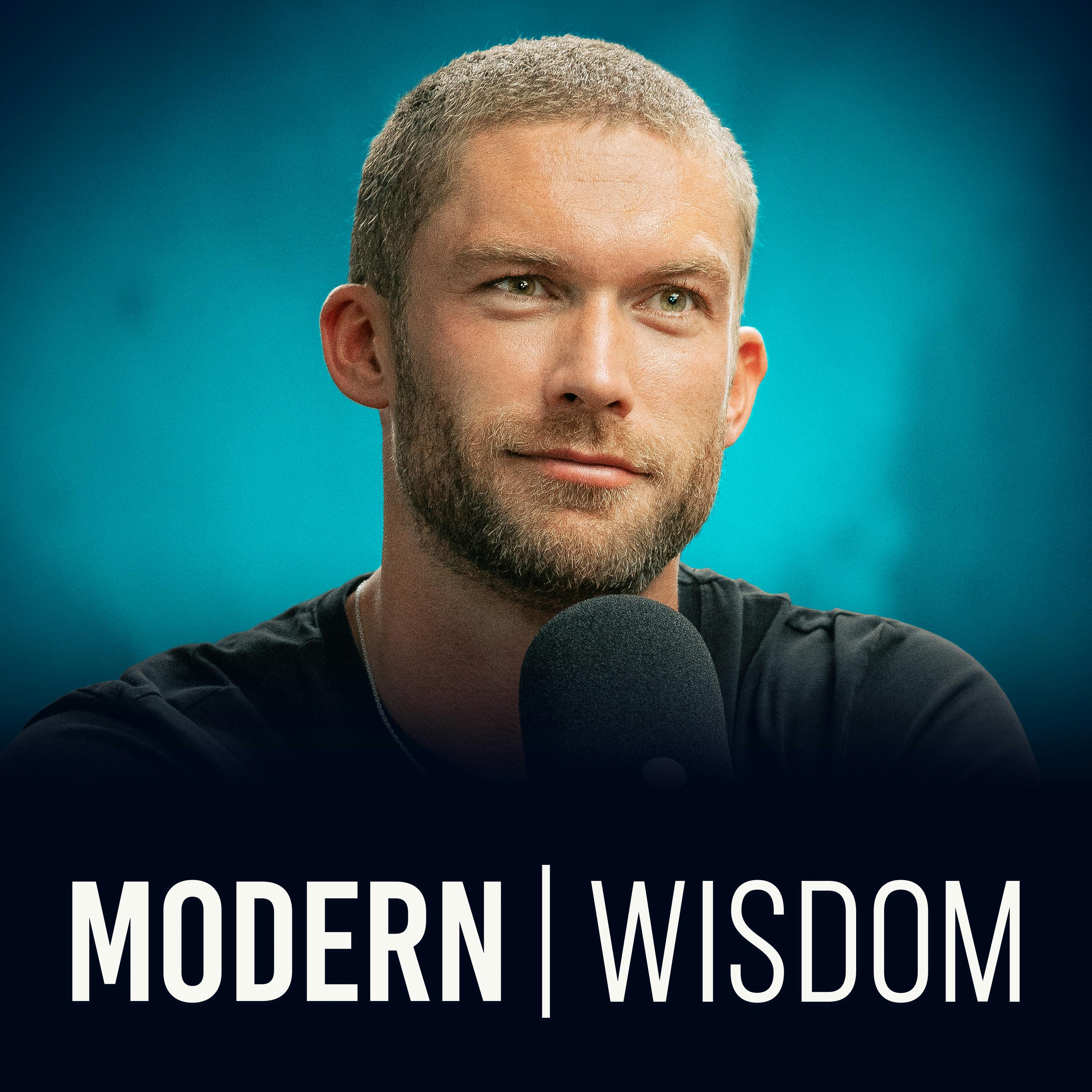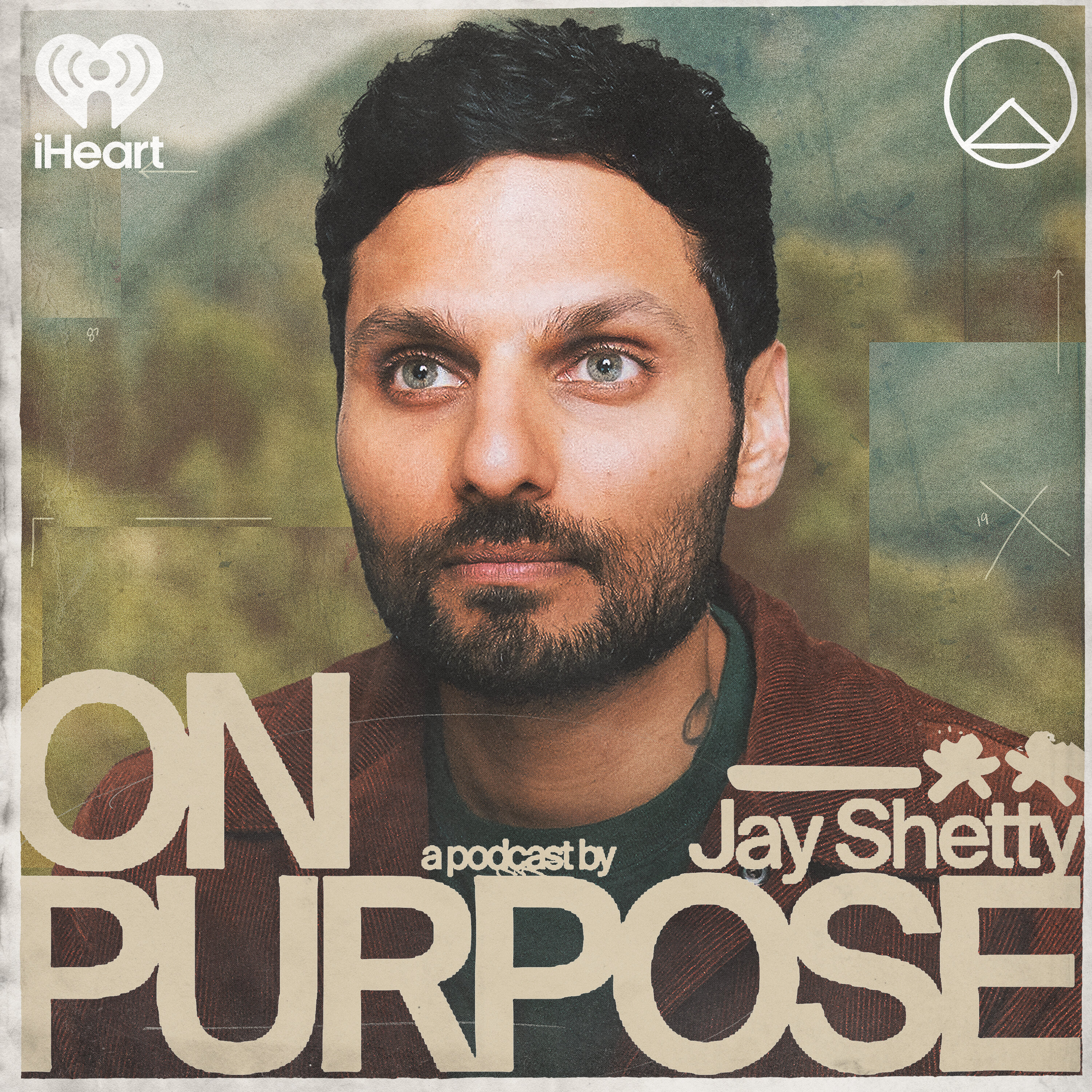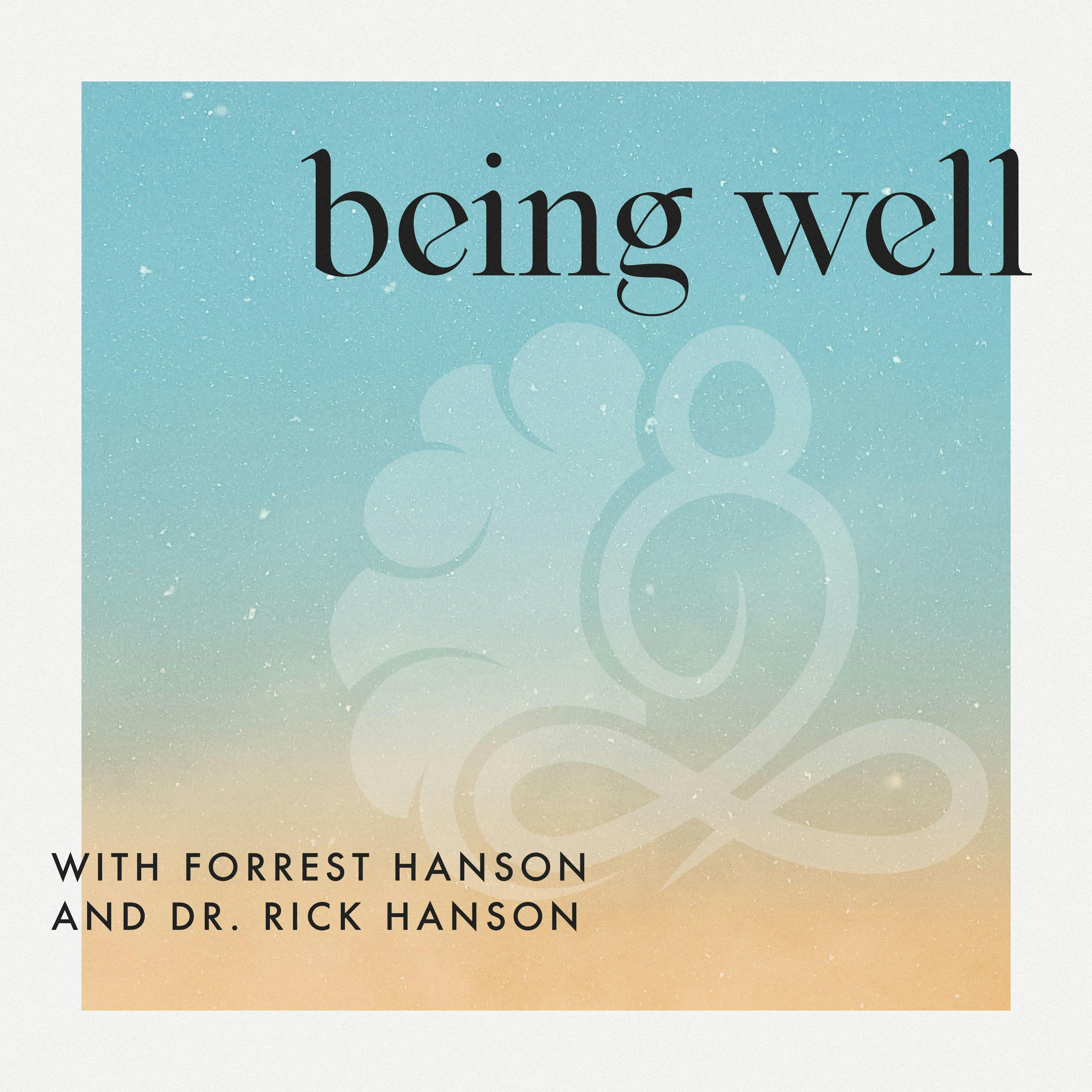
Roots of the Rise
Grounded wisdom for the journey inward and upward.
Roots of the Rise is a soul-centered podcast hosted by Sarah Hope—Ayurvedic health practitioner, spiritual mentor, meditation teacher, biodynamic craniosacral therapist, and energy healer. Drawing from thousands of hours of client work, group facilitation, and her own journey through childhood trauma, grief, and the profound rediscovery of love and joy, Sarah offers a grounded, heart-led space for inner transformation.
Short, daily episodes (10–20 minutes) offer bite-sized insights, ideas, and practices for inner growth and self-development. Whether you're seasoned on the path or just beginning to explore, this podcast gives you digestible nuggets to stay inspired—without overwhelm. It’s perfect for those who want to stay engaged in the work, curious newcomers feeling overloaded by long-form content, or anyone wanting to understand a loved one's journey from a broader, more accessible perspective.
Sarah’s intention is to expose you to a wide range of spiritual concepts, therapeutic tools, philosophies, and practices—all in service of helping you become the healthiest, happiest, most authentic version of yourself. The journey can be hard. It can feel lonely. But you’re not alone. Come walk this path with her—learning, healing, and rising, one grounded step at a time.
Roots of the Rise
Episode 47 - The Second Chakra: Navigating Emotions, Sexuality, and Pleasure
We explore the second chakra, Swadhisthana, and its connection to emotions, sexuality, pleasure, and in our journey through the chakra system.
• Located in the lower abdomen, the second chakra governs our emotions and relationship with pleasure
• Develops primarily between six months and two years as we begin exploring the world beyond our caregivers
• Childhood experiences that deny emotional expression create disconnection from authentic feelings
• Emotional dependency often develops when we learn to prioritize others' emotions above our own
• The basic right of the second chakra is "the right to feel," especially pleasure
• When pleasure is denied, secondary pleasures like addiction can take over as substitutes
• Poor emotional boundaries, crisis addiction, and fear of emotions are common manifestations of imbalance
• Healing requires reclaiming our right to feel without guilt and developing healthy emotional expression
• Moving energy through expression where restricted and containment where excessive helps restore balance
• Smart boundaries allow supportive connections while protecting us from toxic influences
Email me at rootsoftherise@gmail.com with your questions about second chakra issues including guilt, sexuality, and emotional regulation.
Episode 32 - First Chakra introduction
Episode 43: Introduction to the Chakras
The Chakras by C. W. Leadbeater
Eastern Body Western Mind by Anodea Judith
Wheels of Life by Anodea Judith PhD
Welcome to Roots of Arise with me, sarah Hope. Today we're talking about our programming related to emotions and sexuality, our right to feel, especially to feel pleasure. If you find emotional regulation difficult, tapping into passion events with a challenge today might be helpful. In episode 42, I introduced you to the chakra system and we went over kind of a brief general overview. We talked about the first chakra in more detail in episode 43, and in the few episodes since we focused on issues related to the root chakra, to safety and security. Today we move on to the second chakra. I'll give a broad overview and we'll talk about related themes this week. Before we get into it, I just want to reemphasize that you don't need to be a believer of energy systems in order for this to be a useful episode for you, a useful inquiry for you. If you have emotions which we all do, whether or not they're easy for us, any investigation into the second chakra could be helpful, because that's really all it's about. It's about emotions and our pleasure versus pain, about guilt, about creativity. So while, yes, I'm going to give some information today related to the energetic understanding of the second chakra, you can just ignore all that, skip over it. It'll be brief and really focus on the more mental and definitely emotional side of what we discuss. Do just try to keep an open mind, though, of what we discuss. Do just try to keep an open mind, though, curiosity remember. So let's get into covering some basics.
Speaker 1:I apologize in advance if I mispronounce the Sanskrit name. It is Swadhisthana, which means one's own abode or dwelling place of the self. I've also heard it more poetically described as where we drink with delight in the sweet waters of pleasure, which makes sense because the element is water and it is the location of our programming related to sexuality, sensation, pleasure, movement and emotions. It is often associated with the color orange and it's located in the sacrum, the lower abdomen, about four inches below the belly button, kind of centered between the navel and the genitals. Now, we always want to recognize that the chakras are their own individual energy centers, but we don't want to think of them as being isolated. They are all connected. They are part of a whole, so we can think about how they dynamically interact with one another. I covered that more broadly in the introductory episode, so go back and listen to that.
Speaker 1:If you haven't, I'll link it below, but specifically in regards to the second and the first. For instance, you can think of the first being like a cup holding the water of the second. So without appropriate containment, water flows out and the cup runs dry. Meaning, if you don't have kind of a solid root chakra, a solid foundation, the watery emotions of the second kind of run all over the place, whereas if there's too much containment, the water can't flow at all and it becomes stagnant and dull. Ideally, we want it like one of those fountains that water pours into the cup and then it fills and then it spills out. We want the root to be strong and stable, but also, you know, having a little bit of flexibility right. And we want the water to be moving at a manageable pace, not a raging river, not a tiny trickle of barely anything there. We want it like one of those fountains where it's flowing, filling up the cup and then spilling over, and the watery flow I'm referencing is the flow of our emotions.
Speaker 1:The second chakra is developed between six months and two years approximately. Again, this isn't like, oh, you turn six months old and the second chakra switches on. No, we always have it. It's not like it doesn't exist prior to six months, it's just this stage of life. The six months to two years is when it really primarily gets its programming installed. This is when we begin our exploration of the world. You know, it's when we first are able to sit up, we start to be able to move ourselves, and it's also where we go from this feeling of deep unity with our mother to recognizing that, oh, there's a difference, a recognition of self versus the other. You know, we long to reach out and to grow, to change. But that's also really scary because up until this point our mom was basically the same as us. So there's this need to kind of repeatedly run back to mom. Just, our safety of our mother is still there. Well, that's what gives us kind of the confidence and the security to be able to separate safely. You know, the constancy of our primary caregiver is what makes it safe for us to explore.
Speaker 1:One problem that can happen is if a caregiver responds poorly when a child goes to do this, to explore their emotions or assert their individuality. If the child isn't allowed to naturally separate and express themselves, especially when strong emotions surface and the caregiver meets those emotions with fear, rejection, punishment or shame, the child learns a dangerous lesson. I can only feel what makes my parent comfortable. Over time, the child develops a false sense of self, one shaped not by their inner world but by the expectations of others, and this sets the stage for a life disconnected from authenticity. This is what happened to me. I was not allowed to feel what I felt. It was always expected and required of me to place my mother's emotional well-being ahead of my own. That was my job. Yes, I know now that it wasn't my responsibility, but it was my reality.
Speaker 1:Another potential symptom of this same pattern is emotional dependency an inability to connect with or understand your own emotions while being highly attuned to the feelings of others. Hypervigilance often develops where someone might struggle to identify what they're feeling, but can easily tell you what everyone else in the room is experiencing. It's important to recognize that this is not a flaw, but a deeply intelligent and adaptive response. As a child, this person learned my emotions don't matter. What matters is tracking everyone else's mood so I can stay safe In the face of emotional volatility. Their system prioritized external awareness as a survival strategy. The unfortunate thing is that, if this goes on long enough, that child's inner emotional voice will become so quiet, so muted, that they no longer can hear it and they depend on other people to provide them with their emotional state.
Speaker 1:The basic right of the second chakra is to feel. Therefore, the illusion is I don't have the right to feel, especially pleasure. When pleasure is denied, an important part of our second chakra programming doesn't get installed, which creates someone who is missing wholeness but doesn't know what it is, how to find it, or maybe even that it's missing. So we can see this kind of lack of pleasure. We can see people who say I don't really enjoy much of anything. You know, the purpose here is to let go, is to create flow. Whereas with the first it was to hold on and create structure, the second is really more about movement and what stimulates movement pleasure and pain, I mean. We naturally move towards pleasure and away from pain. They are feedback systems for us. So when pleasure is denied, we disown our right to it. We feel guilt for wanting it, we feel ashamed of having it. When primary, healthy pleasures are denied, secondary pleasures can take over, like drinking drugs, sexually acting out overeating, doom scrolling. Since these pleasures can't really satisfy what we truly deeply long for, our lack of satisfaction makes us crave them more and this is why addiction is one of the primary indicators of second chakra imbalance.
Speaker 1:Another experience that can create problems in the second chakra is lack of sensory input. So if a child is not held often enough, which really helps them regulate their central nervous system, this longing, this need to be held can arise and they end up kind of looking for that missing experience. And if it becomes, if they never get it, they can kind of become numb. Children deprived of touch tend to go on to deprive themselves of touch, denying the need. If overstimulated, the child can become overcharged and that excess energy has to go somewhere. So it typically happens in outbursts of crying or of anger, and that can become a lifelong habit. A child can also learn to begin to distrust their own senses if it does not result in a need being met. For instance, if they're crying because they're hungry but they don't get fed, if they're scared and they just want to be held but they get ignored, well then their senses seem to have given them erroneous information and so they begin to distrust themselves. They kind of shut down.
Speaker 1:We talked a little bit about this with the root chakra trust, mistrust. See how they all connect, how they're all intertwined with the second chakra. It's more about not trusting your own feedback system, not trusting're all intertwined With the second chakra. It's more about not trusting your own feedback system, not trusting that own inner voice.
Speaker 1:Obviously, abuse of any sort so sexual abuse in particular, whether it's covert or open, I mean that doesn't just do damage to the second, that does damage to everything. The younger it occurs, the more devastating the effects. You know, what happens when we have sex is we dissolve boundaries. There is a fusion that occurs, especially on an energetic level, and a big part of developing the second chakra is developing boundaries. It's that separation that's happening. So it can become very hard to form boundaries and it also confuses the pleasure pain dynamic. The physical experience might be pleasurable, while the mental, emotional pain and suffering is profound. It's difficult for an adult to process, let alone a child. How do you integrate how these two different things that are so in opposition can be true? We also can see problems in the second chakra with things like neglect, coldness, overuse of playpen, or like restriction of normal movement, religious or moral severity, anti-pleasure and, of course, physical abuse. So I've touched already on some of the manifestations of a damaged second chakra.
Speaker 1:Addiction is a big one. It's that constant pleasure rush, avoiding pain, using drugs, work, sex. It's a craving of stimulation. Think about what happens when you drink. It lessens that inhibiting control of the conscious mind, which allows this release of energy. You're more capable of being spontaneous, making jokes, you feel more relaxed. The problem is that there's no integration with the release. There's just plain expression, not integration. The relief is only temporary and that's what leads to addiction.
Speaker 1:I've also mentioned poor boundaries, becoming emotionally dependent. We also see the opposite really rigid boundaries or frigidity, and this is usually due to a complete lack of programming, for instance, being raised in an emotionally cold household or having the need to suppress emotions in order to tolerate an otherwise intolerable situation. We can also see what is sometimes called crisis junkies. You know the hysterics, the drama queens. These are people who feel most at home, most alive, in states of emotional intensity. Sometimes that's the only time that they truly feel alive. We'll talk about that a little bit when we talk about emotions sometime this week.
Speaker 1:Then, on the other end of the spectrum are those who are afraid to feel at all. Sometimes the fear is specific, like the fear of anger. Maybe their father's anger was tied to physical abuse and now the emotion itself feels dangerous. What might it unleash? I once had a client tell me she was afraid of turning into the Hulk not literally, but definitely figuratively. Other times it's a general fear of emotion.
Speaker 1:A lot of people carry this. I know I did For a really long time. I was terrified that if I let myself feel the full weight of the pain I was carrying, it would consume me. I believed that if I let it out I might never recover. Many people share this fear, especially if in the past feeling deeply led to destructive coping mechanisms like eating disorders, addiction, self-harm. There's a sense of if I let myself feel bad again, I might never come back from it. So we shut down. But the problem is, when we numb ourselves to pain, we also numb ourselves to joy. You don't get to pick and choose. You either feel or you don't. Many people vacillate between either excessive emotion or complete emotional shutdown. The thing is we don't want to be either or right. We want to be like one of those kids toys that are weighted on the bottom, that no matter how many times you try to knock them over, they just completely right themselves. That's what we want. That's the touchstone of a healed, healthy.
Speaker 1:Second chakra is the ability to feel deeply, to feel excessive joy, to feel deep sorrow, but to be able to come back to a steady, solid center. Having said all that, I know you're wondering well, how do I get there? If I have emotional regulation issues, if I struggle with boundaries or with addiction or with my sexuality? How do I heal any second chakra challenges? Well, movement is a good place to start. We essentially need energy to move to center. So where it's restricted, we need to encourage expression. Where it is overly expressive, we need to encourage containment.
Speaker 1:We cannot heal what we cannot feel that's a John Bradshaw quote, but you've heard it, I'm sure, many times is just feel it to heal it, and we need to do that. We need to reclaim our right to feel. We need to remove the guilt, to work on our emotional intelligence, and that's something we'll definitely talk about this week. We need to do boundary work, making sure that we have smart boundaries, not rigid ones that don't let anyone in, not loosey, goosey ones that let everyone in, but smart boundaries that allow people who are life-serving and supportive to be part of our lives in a really connected way, and to keep out the people who are toxic. We need to work with any of the problems that have arisen because of the dysfunction. So if addiction is a problem, we'll doing addiction counseling, that kind of thing.
Speaker 1:We need to allow ourselves pleasure. This is the pleasure center. I mean. This is where our sexuality lives. So if we have hangups with our sexuality, if we have difficulty allowing us to experience pleasure in general, we need to work with that. Even you know it's a good thing to like give yourself an assignment to do one thing every day that you find pleasurable. So those are the broad strokes. Obviously you can get much more detailed. There is a lot more to it, but that's not what we're doing today. If you want to go deeper, I am linking resources below. I highly recommend both of the Judith books. They're great. She's got some great supportive recommendations.
Speaker 1:The last thing I wanted to do today is just give you some questions to ponder about your relationship with your second chakra. So here they are. How was pleasure regarded in your family? Was it frowned upon or indulged in? Did your family take time for pleasure, for vacations, to play, to laugh together?
Speaker 1:What is your first instinct when you feel a strong emotion? Do you express it, suppress it, analyze it, avoid it? What messages did you receive while you were growing up about expressing emotions? Were you encouraged to share how you felt, or were you punished or ignored for it? And lastly, do you notice any patterns or cycles in how you respond to emotional discomfort? This might be something like binge eating, doom scrolling or any other addictive habit. Okay, guys, that is it for today. We are going to be dealing with second chakra issues all this week. So guilt, sexuality, emotions in general. Please, if you have any questions, you can either click the message me button if you're listening on Spotify or email me at rootsoftherise at gmailcom. I hope you have a wonderful rest of your day and remember, know who you are, love who you've been and be willing to do the work to become who you want to be.







